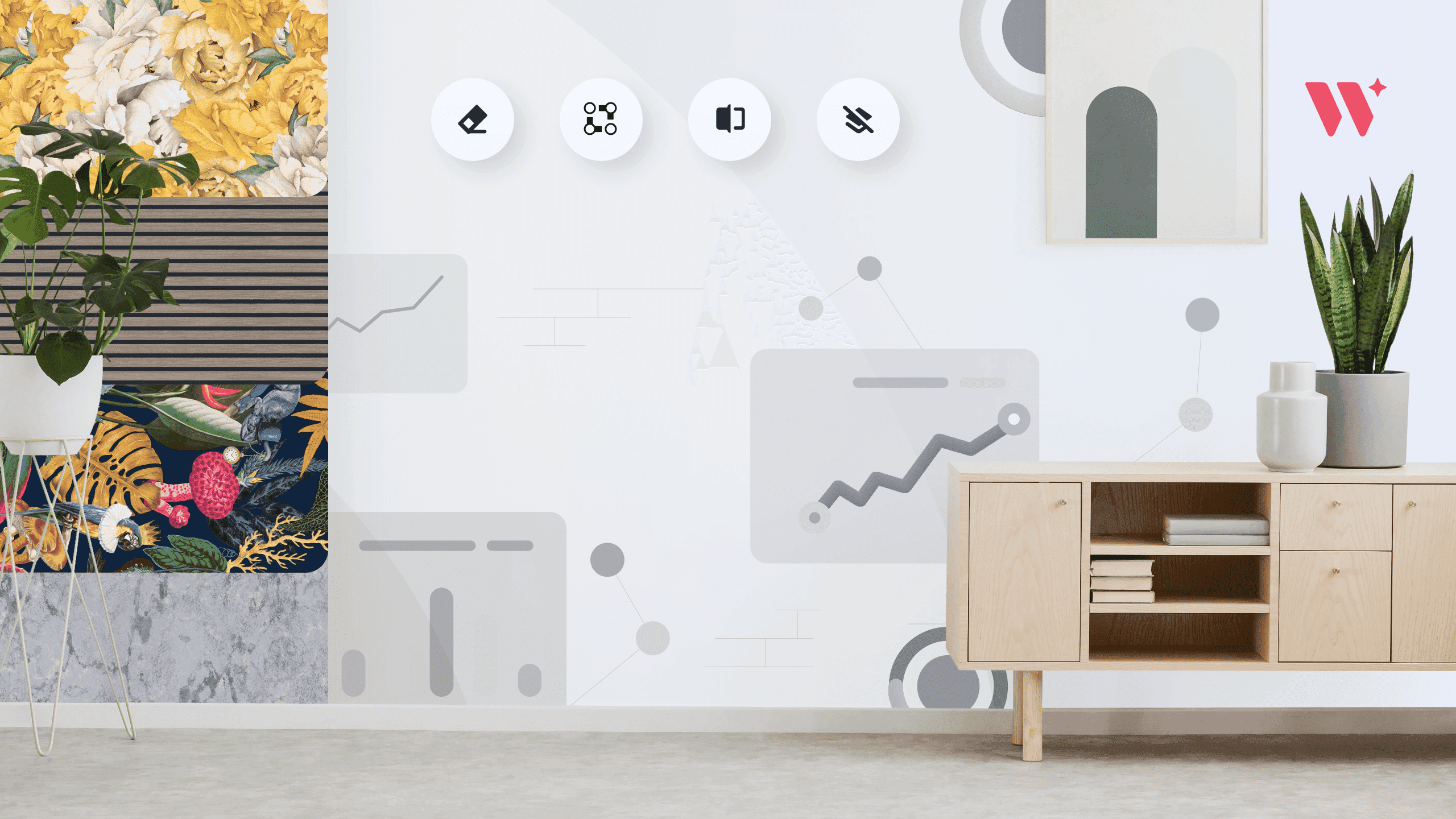6 Outreach Marketing Ideas to Boost Online Sales with Room Visualization Tools

Virtual design tools are becoming an important part of the sales process for companies in the finishing materials market. Whether you're offering flooring, tiles, wall panels, or countertops, helping customers visualize combinations in real spaces can make it easier for them to commit to a purchase. But to get full value from these tools, it's important to build a clear outreach marketing strategy around them.
Below are six practical approaches to improve your e-commerce website optimization, strengthen your interactive shopping experience, and apply CRO strategies that help convert more browsers into buyers.

Multi-surface visualization: how to improve user experience on website
Many users prefer to see how different materials will look together before making a purchase decision. A room visualizer that supports full-room views – including walls, floors, ceilings, and countertops – offers a better intuitive shopping experience than tools that show just one element at a time.
These kinds of virtual design tools help users evaluate how materials work as a set and allow you to encourage cross-selling. This aligns well with modern digital merchandising strategies and supports upselling efforts.
In terms of how to improve a website, adding multi-surface visualization improves engagement and gives users a reason to explore more product categories.

Tool launch campaigns: simple outreach marketing ideas
Once your visualizer is live, make sure your audience hears about it. Use a mix of classic and digital outreach marketing ideas to get the word out:
- Send a press release to relevant trade and design media.
- Post short demo clips on social media.
- Share examples of customer-created rooms to encourage interaction.
- Schedule campaigns during common renovation periods (spring and fall) for maximum reach.
Adding a social selling component – like encouraging customers to tag your brand in their room designs – can also increase engagement and improve brand visibility.
Don’t forget to support these efforts with retargeting ads, bringing back users who engaged with the visualizer but didn’t complete a purchase. These low-effort touchpoints often lead to higher conversion rates.

Data integration: improvements for websites with usage analytics
Your room visualizer can also be a valuable source of data. By tracking what materials and rooms users interact with most, you gain insights that can improve your marketing and sales strategies.
Some ways to apply this data:
- Update homepages and landing pages based on trending products.
- Launch targeted campaigns based on regional or seasonal interests.
- Inform product restocking and highlight popular styles.
Integrating this with your e-commerce analytics tools gives you a more complete picture of customer behavior. This approach supports long-term visual commerce website optimization and helps inform your broader content and inventory strategy.
If you're also running marketing automation, you can use this data to personalize follow-up emails or product recommendations, helping with customer re-engagement.

Clear onboarding: how to improve a website with helpful content
Some customers may be unsure how to use your visualizer. This can limit engagement, even if the tool itself is effective. Making sure you provide simple, clear support content is one of the easiest ways to improve adoption.
Here’s what helps:
- Video guides showing how to use the tool with uploaded or stock photos.
- A step-by-step FAQ that covers common points of confusion.
- Tooltips and short instructions built into the tool interface.
- A section on the homepage linking directly to visualizer tutorials.
This kind of support reduces friction and improves the user interface design, especially for first-time users. Over time, this can improve the tool’s performance and help you better meet your goals around how to boost product sales.
It also builds trust, which supports your broader interactive shopping experience strategy.

Real examples: use customer stories to boost online sales
Customer examples can demonstrate both the usefulness of your visualizer and the quality of your products. These stories also act as natural marketing assets that can be shared across platforms.
Ways to use real-life content:
- Before-and-after transformations shared on social media.
- Quick testimonials describing how the visualizer helped with decision-making.
- Full-length case studies showing how customers used the tool from selection to installation.
All of this supports your brand’s credibility while helping hesitant buyers feel more confident. You can even turn this into a user content campaigns by inviting customers to share their visualizations in exchange for discounts or features on your website.
It’s a straightforward and cost-effective approach to both customer re-engagement and expanding your visual content library.

Partnerships and in-store integration: mixed outreach marketing and offline tactics
To expand the reach of your virtual design tools, look into partnering with home renovation influencers or interior designers. These collaborations can help introduce your products to a wider, targeted audience.
Influencers can:
- Create demo content using your visualizer
- Highlight real projects where your materials were used
- Drive traffic to your site through shared content and recommendations
At the same time, linking your visualizer to in-store experiences can improve the intuitive shopping experience. For example:
- Add QR codes near showroom displays that launch the visualizer
- Use kiosks or tablets to let customers try combinations on-site
- Help sales reps guide customers through the tool as part of the consultation process
Combining online and offline engagement supports consistent digital merchandising and gives customers more flexibility in how they explore your products.
Conclusion: how to boost sales combining digital tools and practical marketing
Room visualizers, when properly integrated into your broader marketing plan, can do more than just look good on a website. They can drive deeper engagement, inform product strategies, and support smarter CRO strategies.
Here’s a quick recap of the six strategies:
- 1. Offer multi-surface views to improve the interactive shopping experience
- 2. Promote your visualizer with smart outreach marketing ideas
- 3. Use insights from e-commerce analytics tools to adjust content and inventory
- 4. Create onboarding content that simplifies usage and lowers friction
- 5. Share customer stories to support how to boost product sales
- 6. Combine influencer marketing with in-store QR and kiosk integrations
If you're exploring how to boost sales with more meaningful, tool-driven interactions, this is a solid place to begin. These strategies require coordination between marketing, sales, and product teams – but the payoff can be significant, both in conversion rates and long-term customer satisfaction.
